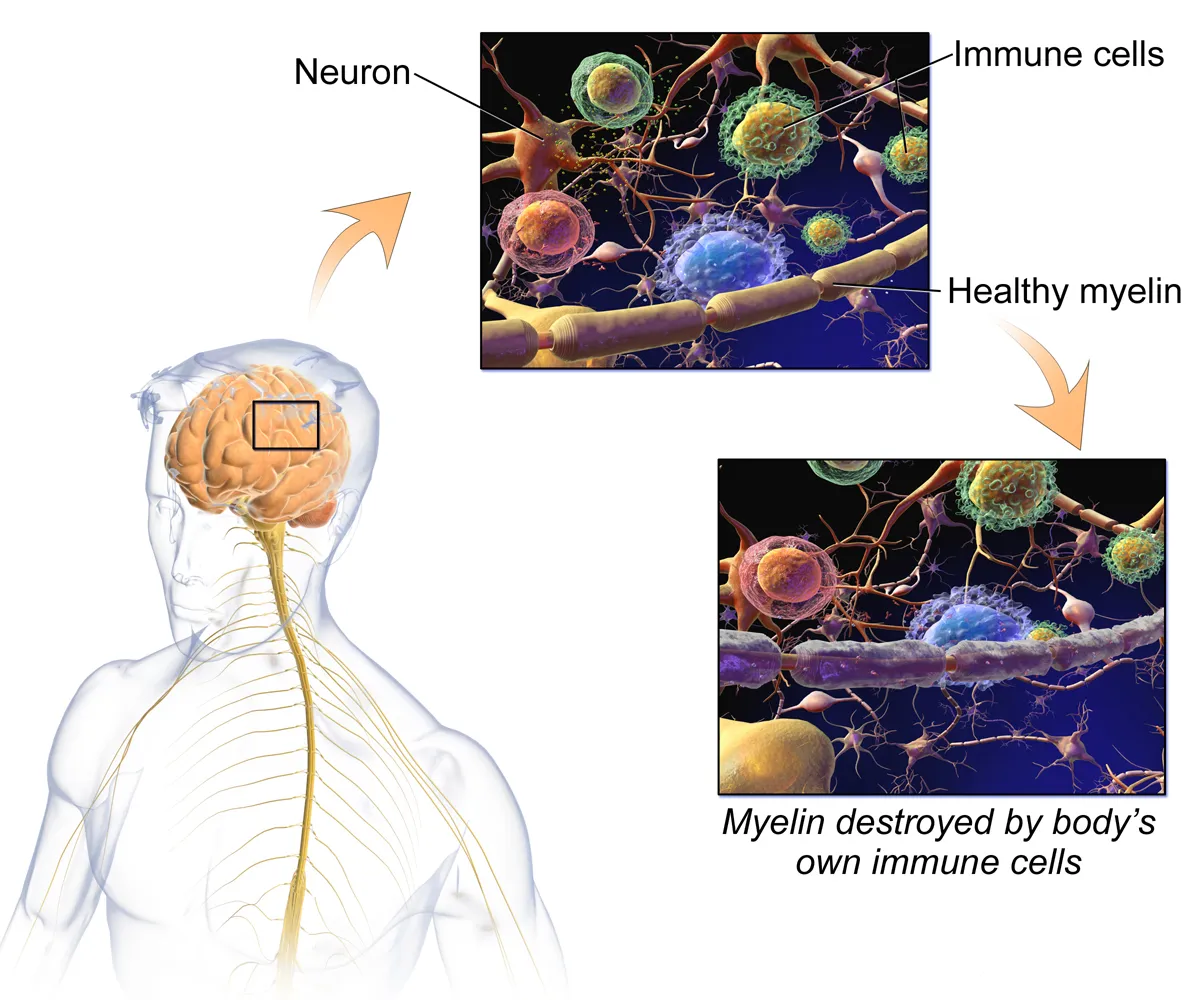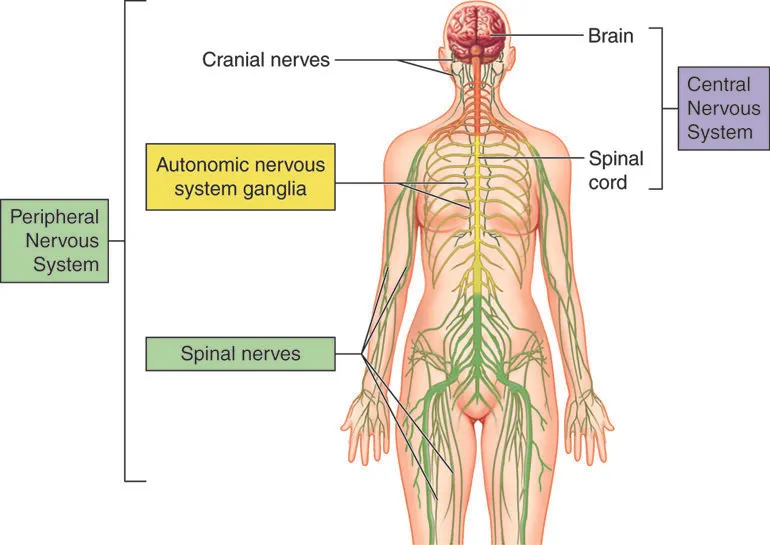Multiple Sclerosis is characterized by a variety of common symptoms and the progression can vary from patients to patients which might occur and vanish after a while.
The progression can differ from one person to another, and symptoms can change overtime. For instance, a person suffering from multiple sclerosis can have blurry vision in one eyes but after 2 weeks, the blur vision can disappear after which two years later, can experience numbness in the left leg and arm but after 4 weeks, can recover from the numbness as though it didn't happen before then suddenly experience gait instability for about a month, recover and then the symptoms can progress to the point where the symptoms can become permanent.
This chronic autoimmune inflammatory disease affects approximately 2.5 million people globally, often diagnosed during early adulthood, typically between the ages of 20 and 40. Interestingly, women face a higher likelihood of developing the condition compared to men. MS targets the central nervous system, comprising the brain and spinal cord, leading to immune system-induced damage.
With multiple sclerosis, there are a lot of factors that contribute to the disease, and they involve genetic factors, metabolism, and the environment. While looking at how gene is a factor, we need to know that mutations in single genes cannot cause multiple sclerosis instead, the variation in multiple genes are what impacts the development of the disease. With multiple sclerosis, a study showed that identical twins has a 25% chance of developing multiple sclerosis if one of them have the disease. With this said, it is visible that certain genes can contribute to developing the disease and one of them is HLA-DRB1 which is a gene involved in of body cells by immune cells.
While the cause is yet to be known, its risk factors are notably known and people suffering from multiple sclerosis will have brain damages in the brain stem, optic nerve, the cortex, and the cerebellum. The spinal cord can also be damage. Like in the scenario I gave in the beginning, it is visible that the optic nerve was affected, and in cases where the optic nerve is affected, it can lead to paralysis.
Patients suffering from Multiple Sclerosis will suffer from Demyelination, and Axonal Degeneration of the central nervous system where axons are destroyed, as well as Myelin which insulate nerve fibers are destroyed. Factors that can lead to the destruction of Axons includes influx of Calcium into the cell which lead to the activation of a protease known as Calpain which destroys the protein in the axons thereby destroying the axons. It is believed that inflammation leads to nano ruptures of Axon leading to calcium rush into it but the cause is still debated heavily.
There are different types of Multiple Sclerosis, but the one I discussed at the beginning is known as Relapsing-Remitting MS, which is the most common type of multiple sclerosis and with this, the symptoms come, after which there is remission where the symptoms completely disappear. While there is Remission, it doesn't last long as the patient can develop Secondary Progressive MS which arises from multiple relapsing symptoms. Just as we have secondary Progressive MS, we also have Primary Progressive MS where the disease becomes worse from the beginning of the disease symptoms.
Just as I have mentioned different types of Multiple Sclerosis, I cannot forget to mention Progressive Relapsing MS, which is very rare. It is important to know that most degenerative diseases usually tend to be fatal leading to the death of the patients but with Multiple Sclerosis, its pathology doesn't directly cause the death of the patients but they end up being depressed, with an increased suicide rate.
In reflecting on the complexities of living with MS, the poignant words of Rose Robinson encapsulate the experience: "Strong but then weak, happy but then sad, Sometimes feeling hopeful, Always Dreading the bad." This poem poignantly captures the essence of the MS journey.
Reference
https://www.ninds.nih.gov/health-information
https://www.who.int/news-room/fact-sheets
https://www.msdmanuals.com/home/brain,-spinal-cord
https://www.nhs.uk/conditions/multiple-sclerosis
https://www.pinterest.com/pin/pinterest--375558056407257668/
https://myhealth.alberta.ca/Health/Pages
https://www.nationalmssociety.org/What-is-MS/Types-of-MS
https://www.ncbi.nlm.nih.gov/pmc/articles/PMC3258250/

